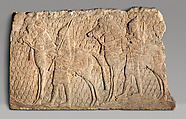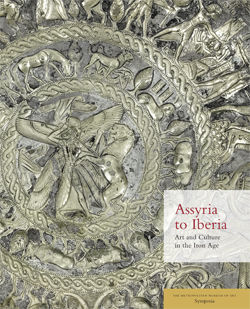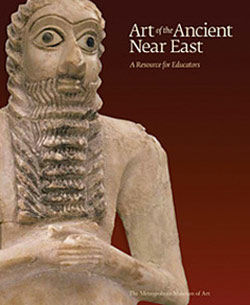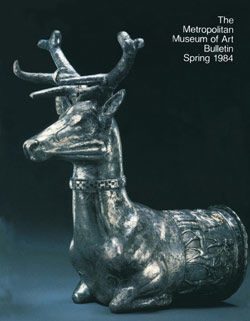Relief fragment: cavalrymen along a stream in mountainous terrain
Not on view
This relief fragment dates to the time of the Assyrian king Sennacherib (r. 704-681 B.C.), and comes from the great Southwest Palace, called by Sennacherib the "Palace Without Rival," at Nineveh in northern Iraq. It shows two Assyrian soldiers, each leading a horse, walking along the bank of a river or stream. The scale pattern of the landscape in the background indicates a hilly or mountainous location.
The two soldiers wear similar armor. Their typical high conical Assyrian helmets have cheek-guards, and some decoration is visible. Surviving remains of Assyrian and Urartian helmets suggest that they probably featured divine protective imagery. They carry short spears, and on their backs carry bows and quivers full of arrows. Their body armor, worn over their normal clothing of tunics and wraps, consists of scales that were made of leather or metal, and the hatched pattern seen on the legs above the high boots also represents some kind of protective covering. Each soldier also carries a short sword, worn at the hip.
The horses led by the soldiers are richly harnessed. Each wears a large tassel, elaborate cheek-pieces, and a crest at the top of the head. The harnesses feature rosettes in several places, appropriate for protection in battle because of their divine associations, notably with Ishtar, goddess of war.
The background of the scene shows the soldiers’ location. The water visible at the bottom of the image is a mountain stream. Drawings made by the excavators of the larger scene from which this fragment comes reveal a long line of soldiers and horses following the winding path along its bank through mountains, part of a continuous scene that wrapped around an entire room. Reliefs made during the reign of Sennacherib are the first in Mesopotamia to use landscape imagery so extensively. The scale pattern had been understood to represent hilly or mountainous terrain for millennia in Mesopotamian art, but filling the entire picture field in this way was an innovation. This new approach to depicting landscape and place allowed the designers of the Southwest Palace reliefs new scope to describe the far-away lands Assyria now ruled. In this case, the campaign depicted probably took place in the Zagros Mountains of western Iran.
Due to rights restrictions, this image cannot be enlarged, viewed at full screen, or downloaded.




